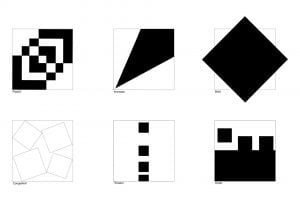Learning the Technique
We began learning how cubes are shown through one-point and two-point perspective. You can see the beginning process of that here. Through this I learned how high/ low or to the right/left an object should be to get my desired perspective. We furthered this by applying more complex shapes to the perspective techniques and adding shading, which you can also see here.
Designing the Room
It was time to apply the new uses of perspective and shading to a comprehensive room. We began with a practice room/ perspective grid and placed a simple cube within it, which you can see here. I knew I wanted my room to be simple and minimalist. To do that, I would have to find a way to add some complexity to the drawing somewhere, so I took another spin at practicing shading and the way that it can affect a space. I feel as if I could improve upon my shading skills or try new shading techniques like stippling or cross hatching. I also included a cat with my room; I would like to get more practice at drawing organic objects in perspective. I tried to be conscious of depth cues like darker objects being closer and closer objects having more details (I tried to do this especially with the leaves on the front porch).
Contents of the Room
I wanted a clean room that I could see myself actually working in. You can view the final project here.
-I added a hanging chair that has a track attached to the ceiling. This would allow me to easily move myself to different areas in the room without extra floor clutter.
– I added a large window that would let in tons of sunlight and would be a nice place to swing my chair towards if I needed a break (also an excellent place for the cat).
-The candles allow a soft and welcoming environment for when the ceiling light becomes too much.
-The desk is against the wall with minimal decorations to allow all focus to be on whatever project I am working on.
-In the back of the room is a tiny door. I’ve always wanted some sort of interesting passage (or even a secret passage) of my own.












